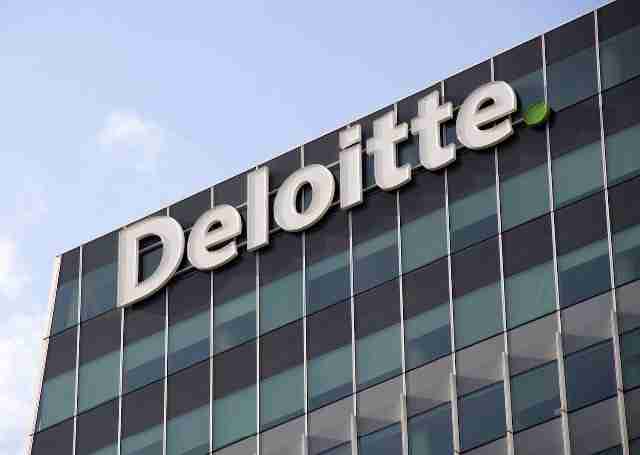
In the past few years, the unprecedented growth of mobile financial services in sub-Saharan Africa has defied all expectations. While Kenya is often cited as a leading example of digital transformation, Ghana has recently become the fastest-growing mobile money market in Africa, with registered accounts increasing six-fold between 2012 and 2017. The country's experience provides a fresh perspective on its digital transformation and demonstrates that technology can help modernise the financial system as well as also support greater financial inclusion.
In Ghana, mobile financial services are mostly used by those poorly served by the traditional financial sector. The 2017 Global Findex database indicates that access to formal financial services rose from 41% of adults in 2014 to 58% in 2017]. This is largely attributable to mobile accounts, with 20% of digital-wallet users being previously unbanked. These now represent about 40% of all account holders, compared to 13% in 2014.
Furthermore, by reducing the lengths of transactions as well as the associated risks and costs, mobile-money solutions better meet the needs of vulnerable customers such as smallholder farmers. While rural access to formal financial accounts is still low, figures have almost doubled since 2011, [from 26% to 51%]. Today, approximately 40% of payments for the sale of agricultural products are made via a formal account, and in most cases into a mobile-money account.
Mobile money on the rise
Many factors explain the rapid progress of mobile money use in Ghana. First, the strong penetration rate of mobile phones (about 128% of the population) make the widespread use of mobile-money services possible, particularly in rural areas. Second, and more importantly, the Ghanaian success is the product of a right mix of consumer-driven practices and a favourable regulatory environment for the industry, built on the back of early infrastructure investments.
If Ghana can boast about championing mobile money today, in the early years digital services struggled to gain traction. The initial 2008 regulation for branchless banking was highly restrictive, imposing rules and requirements that deterred most initiatives. The regulations reflected the perceived "high-risk gamble" of allowing non-bank actors such as mobile network operators to issue e-money and potential negative implications for the stability of Ghana's banking sector.
When it became apparent that adoption was falling well below expectations, with the support of the Consultative Group to Assist the Poor (CGAP), the Bank of Ghana agreed to engage with all stakeholders and take a second look at the regulations to change the course of mobile money in the country. The revised 2015 e-Money Issuer Guidelines shifted to a more flexible approach, allowing new players in the provision of financial services and more scope for experimentation.
Key initiatives
In addition to creating a regulatory framework adapted to the needs of users and operators, Ghanaian authorities took other key initiatives in supporting the development of innovative payment technologies. Underlined in the latest World Bank economic update, the expansion of the agent distribution network - from around 6,000 agents in 2012 to more than 150,000 in 2015 - was key to allow more cash-in and cash-out opportunities and overall convenience of using mobile money.
In May 2018 Ghana also launched one of the first interoperable systems in Africa, allowing transactions between the different mobile telephone service providers. The interoperability payments reached 308 million GHS (57 million US dollars) by the end of March 2019. Finally, the introduction of the E-zwich biometric card should ease recognition and use of payments solutions for all cardholders.
User adoption of mobile banking is increasing, but has been limited by restricted merchant acceptance: 2.7 million cards have been issued and 7.7 million transactions handled, representing 2% of Ghana's GDP. Although most payments are immediately cashed out, 53% have residual value.
Ghanaians have so far used mobile wallets principally for transferring money to a person (peer-to-peer, P2P). According to Bank of Ghana data, the total value of all mobile money transactions reached 156 billion GHS (29 billion US dollars) in 2017, compared to 35 billion GHS (6.5 billion US dollars) in 2015. Gradually the range of mobile accessible goods and services has successfully expanded to the purchase of mobile communication credits, payment of public service bills or salaries.
To achieve sustainable change, Ghana's next challenge revolves around digitizing government collections and utility payments - government-to-people (G2P) and vice versa - the majority of which is still paid in cash. Digitizing these payments will help broaden the tax base, increase the size of the formal economy, as well support financial inclusion efforts.
An interesting example of such an initiative is the digital renewal process of Ghana's National Health Insurance Authority, whose role is to ensure access to basic healthcare services for all residents. While each year around 11 million members renew their membership in person at a NHIA district office, the process remains lengthy (taking up to a day), curbing the upward trend in renewal rates. Supported by the Impact Insurance Facility of the International Labour Organisation and Agence Française de Développement (AFD), the efficient and user-friendly platform allows users to renew their membership via a mobile phone.
Furthermore, digitisation will help better identity and verify providers that can improve access to affordable and quality healthcare. Increasing renewals will also reduce fraud, and potentially leading to an estimated 15-25% reduction in NHIA's annual deficit.
Enabling innovation
Ghana provides a unique case of governmental commitment to create a suitable working environment for innovation. Digital solutions have enabled wider access to financial services such as health insurance, mobile-based pension schemes (see People' Pension Trust) and microcredit loans. More and more previously unbanked users are now using micro-loan services (starting at 2 US dollars). For the first time, users will also earn interest on their digital saving accounts, with total interest paid to holders of electronic money wallets amounting to 24.8 million GHS (4.5 million US dollars) in 2016.
However, in an environment of low financial literacy, many of those using digital credit products don't fully understanding their rights and obligations as consumers, and sometimes fall victim to predatory practices. Going forward, the Ghanaian consumer-protection regulation will have to tackle client-protection issues raised by digital financial services, in line with Social Performance Task Force recommendations, supported by AFD.
Selin Ozyurt, Economist, Agence française de développement (AFD) and Charlotte Beck, Task Team Leader, Agence française de développement (AFD)
Read Full Story




















Facebook
Twitter
Pinterest
Instagram
Google+
YouTube
LinkedIn
RSS